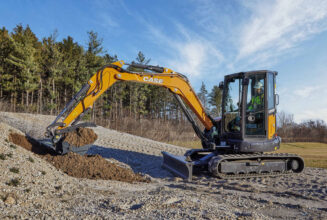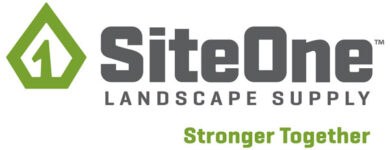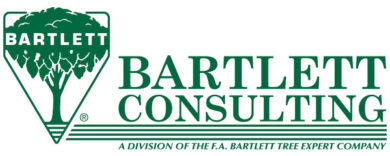What to Expect During an OSHA Inspection
By Katie Navarra
If an OSHA inspector arrived at your office, business property or job site, would you be ready for an inspection?
Advanced notice for OSHA inspections is prohibited, meaning an inspector arrives, knocks on your door, shows his/her credentials, and tells you that you were selected for an inspection. In some instances, the visit may even be unplanned.
“One contractor had a crew working on a highway planting, and an OSHA inspector just happened to be driving by, saw something out of place, pulled a U-turn, conducted an inspection and issued citations,” said Sam Steel, PLANET safety advisor, and senior research associate at Penn State University.
OSHA was established through the Occupational Safety and Health Act of 1970, and was designed to “assure safe and healthful working conditions for men and women by setting and enforcing standards and by providing training, outreach, education and assistance.”
Every employer, regardless of the industry, is bound by OSHA’s general code known as Section 5 (a) (1), which states that, “Each employer shall furnish to each of his employees employment and a place of employment which are free from recognized hazards that are causing or are likely to cause death or serious physical harm to his employees…”
Aside from the general duty cause, landscape, horticultural lawn care and any employer in the green industry should be knowledgeable about the codes specific to the field. The codes cover topics such as 1910.25 (portable wood ladders), 1910.136 (foot protection), 1910.138 (hand protection), 1910.1030 (blood-borne pathogens), 1910.332 (training) among many others. A detailed list is available at [ital>www.osha.gov/SLTC/landsacping/index.html.<ital]
It is important to know that 25 states, Puerto Rico and the U.S. Virgin Islands have OSHA-approved plans outlining their own standards and enforcement policies (see sidebar).
“The state regulations are at least as stringent, and usually more strict, than the federal regulations,” Steel explained.
Complying with OSHA standards is important to ensure a safe work environment for employees. While protecting employees is the number one priority, following OSHA guidelines is important for financial reasons as well.
A single citation can range from $5,000 to $7,500. Typically, a business that receives one citation, receives multiple citations. “I helped one company that received three citations totaling $42,500,” said Steel.
Most common citations for green industry businesses
“I believe the number one violation in the green industry is the failure to have a written safety program,” he added.
A properly documented safety program includes the company’s policies, procedures and training provided. Written programs should include hazard communication, accident investigation, and a safety committee that meets regularly.
Training must be provided in the worker’s native language and in terms the worker understands and can relate to. After an inspector reviews the documents, he/she will likely ask to interview one or more of the workers to ask what type of training they have received. In particular, the inspector will ask about training on forklifts and other company equipment.
The use, lack of use, or failure to provide Personal Protective Equipment (PPE) is the second most common citation, Steel noted. Employers are required to provide workers with PPE, be it gloves for hand protection, safety glasses for eye protection, or ear plugs for hearing protection to name a few.
Not only are employers responsible for providing this equipment, they are also mandated to train workers on how and when to use PPE including when it is needed, why it is needed, the limitations of PPE, how to properly wear and adjust the PPE, and how to care for the PPE.
PPE depends on the task being performed, job site location and the potential hazard. “There have been a number of workers killed on interstate jobs,” said Steel. “Safety vests, of a specific color, must be worn by all workers performing tasks near vehicular traffic.”
Within the documentation, the employer is required to self-identify potential hazards. According to Steel, a lawn care company providing mowing services would need to include a statement acknowledging, “Workers operating zero-turn mowers may be exposed to more than 85 decibels while operating the equipment during their shift, and will therefore be provided hearing protection.”
Steel believes the third most common citation for landscape and lawn care companies often relates to machine guarding. “Employers need to be careful of guarding and shielding,” Steel cautioned. “The guards are engineered and installed on the equipment for a reason.” Missing or damaged shields must be replaced or repaired, or fines will be issued.
The fine depends on the severity of the infraction and how many previous violations the employer has. “If there have been previous inspections that show a problem, and a second investigation shows the same problem, the fines will be hefty,” Steel said.
How should you prepare for an inspection?
Preparing for an inspection begins long before an inspector arrives on the site. It begins with planning and documentation.
In addition to formalizing written policies and providing documented training, appoint one or two individuals responsible for interacting with an OSHA inspector. These employees should be knowledgeable of OSHA regulations and will act as the company’s spokesperson during the investigation.
In advance of an inspection, discuss with your attorney if you will request OSHA to obtain a search warrant prior to conducting an investigation or if you will decide on a case-to-case basis.
Small to mid-sized businesses can request a free meeting with the State OSHA Consultation Program for a “walk-through.” The “walk-through” identifies potential hazards, including any that could result in a citation, and offers suggestions on how to decrease hazards. The representative provides a follow-up report highlighting things to work on, and will likely include things business owners would not have thought of.
Though the State OSHA program is funded by federal OSHA department, it is separate from OSHA enforcement and findings [ital>are not<ital] submitted to OSHA enforcers.
The State Consultation offices are typically located at a university, other college, or within state government. The results of the assessment are not reported to OSHA enforcement unless the business owner is unwilling to eliminate a “serious” hazard or remove employees from an “imminent danger” situation within an agreed upon timeframe. Learn more about this free service at www.osha.gov/dcsp/smallbusiness/consult.html.
Ace your next inspection
Between October 2012 and September 2013, OSHA inspectors conducted 237 inspections, and issued 611 citations for a total of $801,101 in fines. The citations covered numerous OSHA standards, but most often fell into the categories of Personal Protective Equipment (PPE), training, general duty and guarding.
Be polite, professional and prepared. “This is not the time to be combative,” Steel advised.
An inspector doesn’t set fines during an inspection; they take the report back to the office to decide. Steel explained. “The employer gets a letter that informs them of the citations, the fines and that they can request an informal meeting.”
You may request an informal meeting to discuss any citations that are made. You can bring a lawyer with you should you so choose. “[The informal meeting] is a good place to be humble and chances are you will be able to negotiate the fines,” Steel added.
Katie Navarra is a landscape industry professional based in New York. She is also an accomplished author and freelance correspondent with more than 200 articles to her credit. She can be reached via e-mail at katienavarra@yahoo.com.
The following states have approved state plans:
- Alaska
- Arizona
- California
- Connecticut
- Hawaii
- Illinois
- Indiana
- Iowa
- Kentucky
- Maryland
- Michigan
- Minnesota
- Nevada
- New Jersey
- New Mexico
- New York
- North Carolina
- Oregon
- Puerto Rico
- South Carolina
- Tennessee
- Utah
- Vermont
- Virgin Islands
- Virginia
- Washington
- Wyoming
NOTE: The Connecticut, Illinois, New Jersey, New York and Virgin Islands plans cover public sector (state and local government) employment only.



